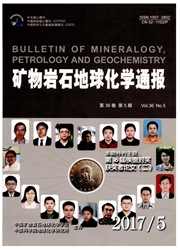

 中文摘要:
中文摘要:
欧美研究者一系列的实验都显示三叠纪时期泛大陆存在巨型季风;三叠纪上扬子地区位于特提斯洋北缘,其是否存在巨型季风的影响以及其影响程度如何值得关注。一系列的沉积学记录显示上扬子地区在三叠纪亦受到巨型季风的强烈影响,这主要表现在:1)早三叠世飞仙关期纹层状沉积岩;2)早三叠世飞仙关期普遍存在的风暴岩;3)晚三叠世卡尼期碳酸盐生产力危机;4)晚三叠世须家河期明显的化石木年轮。上扬子地区沉积记录显示,早三叠世早期和晚三叠世卡尼期是三叠纪巨型季风最为剧烈的时期,本文认为P/T界限生物大灭绝引发的Gaia效应和卡尼期特提斯域强烈的构造活动极可能是这两次巨型季风极盛发育的主导因素。
 英文摘要:
英文摘要:
The existence of Megamonsoon was proved by Euramerican researchers' researches.Whether there was Megamonsoon and how it influenced in Upper Yangtze area,the northern fringe of the Triassic Tethys Ocean,is worth of close attention.A serial of sedimentary evidences revealed upper Yangtze area was strongly affected by the Triassic Megamonsoon,which was mainly reflected in: 1)varves in the Lower Triassic Feixianguan Formation;2)tempestite in the first segment of Feixianguan Formation;3)Late Triassic Carnian carbonate productivity crisis and 4)clear tree ring of fossil wood in Upper Triassic Xujiahe Formation.The sedimentary records in Upper Yangtze Area showed that megamonsoon was most intense in the Early Triassic period and Late Triassic Carnian Time.It's believed in this paper that the Gaia effect caused by the mass extinction at P / T boundary and the strong tectonic activity occurring during Carnian time in Tethys Region were the dominant factors to induce the Triassic megamonsoon.
 同期刊论文项目
同期刊论文项目
 同项目期刊论文
同项目期刊论文
 期刊信息
期刊信息
